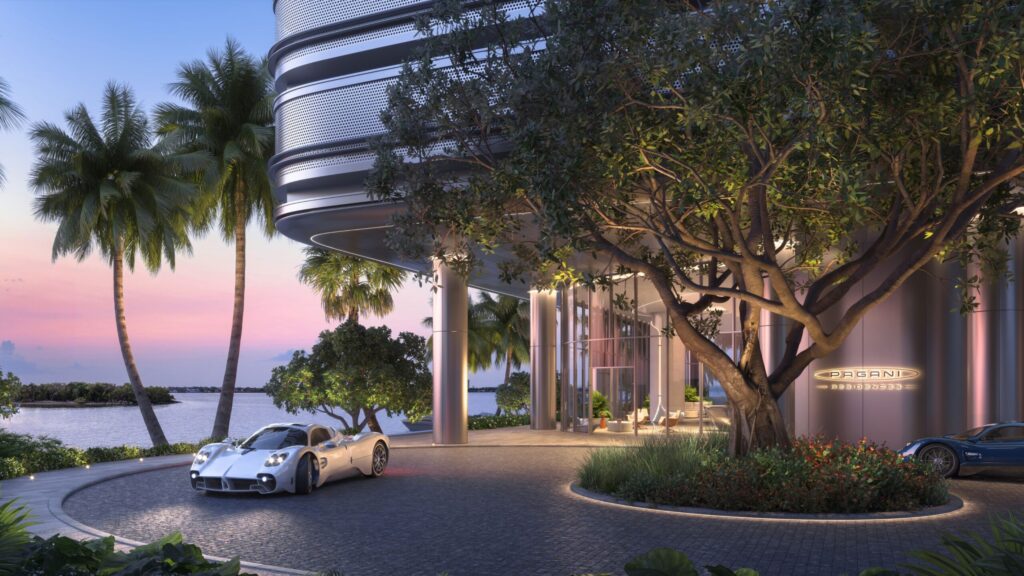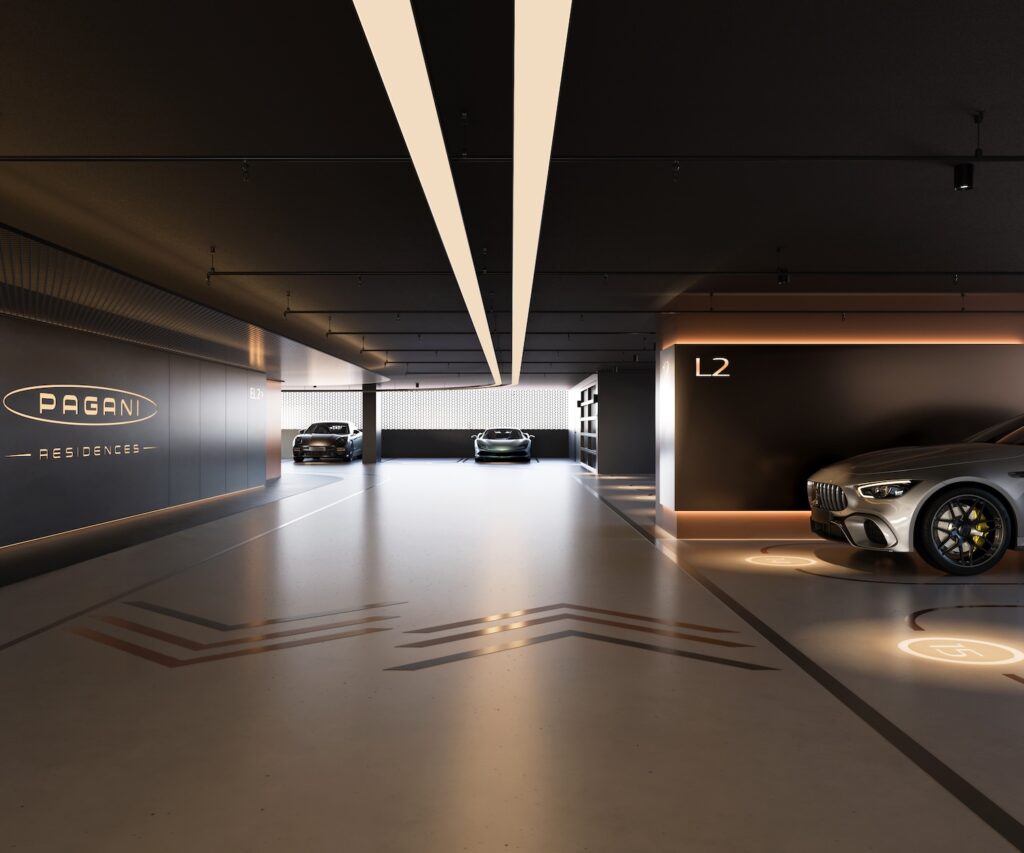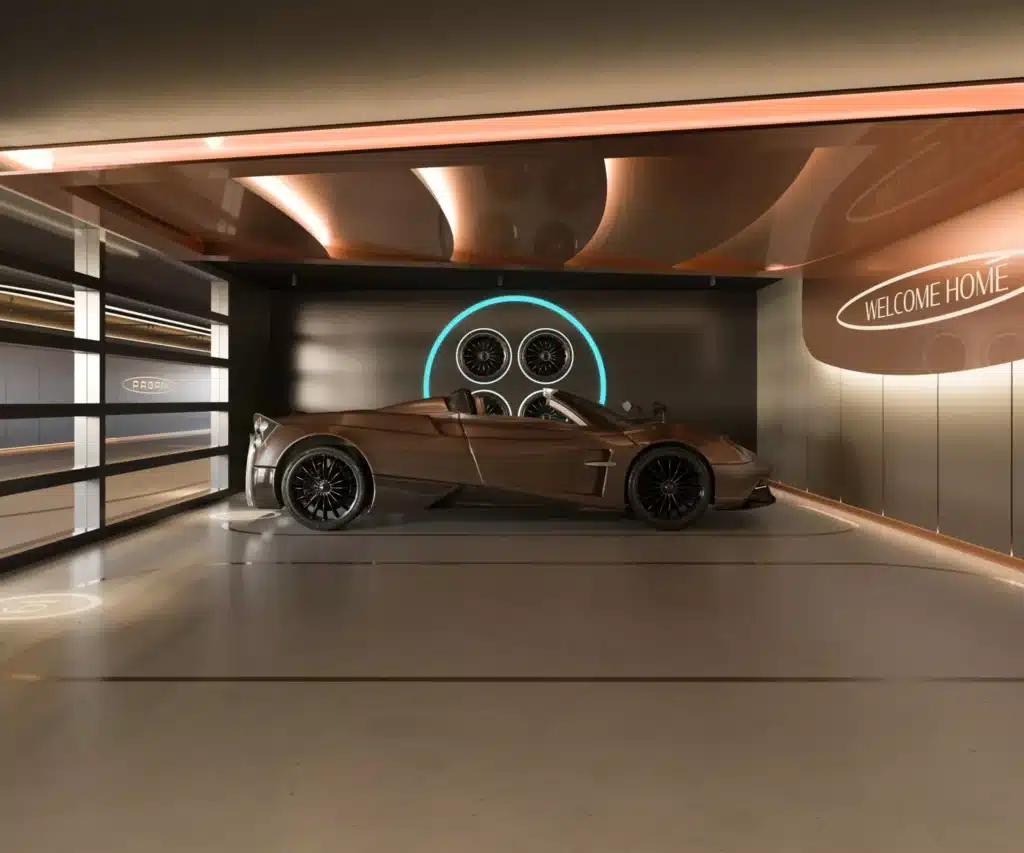In the cultural epicenter of Miami, a city already synonymous with flamboyance and extravagance, a new experiment in design and lifestyle is underway. Pagani Residences is rethinking one of the least glamorous elements of the home—the garage—and transforming it into a gallery of automotive artistry. Rather than acting as a utilitarian afterthought, this space emerges as a sanctum, a stage for rare and high-performance cars. By merging architecture, design, and mechanical beauty, Pagani is not just reshaping garages, but redefining what luxury living can mean in the 21st century.
At the helm of this shift is Horacio Pagani himself, a designer revered not only for his hypercars but also for his belief in the poetry of mechanics. With Pagani Residences, his philosophy—where art and engineering meet—is applied to living spaces. For collectors, the garage is no longer simply where the collection sleeps, but where it breathes.
Designed by Horacio Pagani: A Vision in Aluminum
Horacio Pagani is known for elevating car design into an art form. His work on the Zonda and the Huayra proved that hypercars could be both mechanically masterful and aesthetically transcendent. That same ethos finds new expression in Pagani Residences. The façade of the garages, envisioned by Pagani himself, carries the brand’s DNA into a domestic environment.
The key detail is the perforated aluminum skin, punctuated with elliptical cutouts. These elliptical voids echo the Pagani Ellipse, a recurring motif in Pagani design language, seen in details ranging from dashboard vents to exhaust arrangements. Here, it becomes the canvas for architecture, filtering sunlight into a dappled glow while also allowing for ventilation. Natural light transforms the garage into a luminous display hall, rather than a closed storage box.
The façade also carries layered metal “eyebrows”, creating the impression of movement even when the structure stands still. These rippling elements are sculptural, much like the flowing lines on a Huayra’s bodywork. They embody Pagani’s obsession with movement and tension, extending the soul of his cars into architectural form.
Miami: The City as a Stage for Automotive Art
There is no better stage for such a radical rethinking of garages than Miami. The city thrives on spectacle and lifestyle, where art deco hotels, contemporary galleries, and superyachts sit comfortably beside each other. Miami has also emerged as a magnet for automotive culture, with Art Basel often spilling into high-end car showcases and luxury real estate serving as an extension of personal collections.
Pagani Residences harnesses this atmosphere, embedding the garage into the broader cultural narrative of the city. No longer hidden underground or tucked away in basements, the garage becomes part of the residence’s façade—an exhibition that communicates status, taste, and identity to the street. It is as much about the collector as it is about the collection.
The Garage as a Museum: A Sanctuary for Collectors
In Pagani Residences, the garage transforms into what can only be described as a museum for machines. For collectors, this means their cars are not simply stowed away, but elevated to artifacts. A 1960s Ferrari, a McLaren F1, or a modern Pagani Huayra Codalunga becomes a centerpiece—spotlit, ventilated, and staged.
The sanctuary effect is deliberate. Car collectors invest not only money but also emotional attachment into their vehicles. These cars are biographies of human engineering, mechanical symphonies of speed, history, and culture. Pagani Residences acknowledges that truth and builds architecture around it. The environment celebrates each car as though it were a painting in the Prado or a sculpture at the Louvre.
Blending Aesthetics with Practicality
The brilliance of Pagani’s approach lies in its refusal to choose between aesthetic grandeur and practical necessity. A garage must still be functional—accessible, safe, and protective. By using perforated aluminum, natural ventilation reduces reliance on heavy mechanical air systems, and the cutouts double as both aesthetic patterning and practical breathability.
Lighting is carefully considered, with both natural and artificial solutions designed to showcase curves and colors of each car. Security systems integrate seamlessly, ensuring that the luxury of display does not compromise safety. The result is an architecture where beauty and practicality coexist—an echo of how a Pagani car combines aerodynamic efficiency with sculptural form.
The Symbolism of the Pagani Ellipse
To fully grasp the genius of the design, one must linger on the Pagani Ellipse. This motif, simple yet infinitely adaptable, is the thread that unites Pagani’s philosophy. In the cars, it represents fluidity and harmony—geometry that avoids the rigidity of squares or the perfection of circles, preferring the organic balance of ellipses.
On the façade of Pagani Residences, the ellipse becomes architectural ornamentation. It filters light, frames shadows, and ties the building visually to Pagani’s automotive legacy. In effect, it makes the garage façade a macro-scale car detail, a reminder that the garage itself is as much an object of design as the cars it houses.
Miami’s Haute Real Estate Evolution
The rise of Pagani Residences also speaks to the evolution of Miami’s luxury real estate market. Traditional notions of luxury—marble kitchens, infinity pools, penthouse views—are now being redefined by cultural experiences embedded within private spaces.
Where once a wine cellar or art gallery marked the pinnacle of taste, today the garage takes that role. Miami’s wealth attracts car collectors from around the globe, making automotive architecture not just niche but essential. Pagani Residences positions itself at the forefront of this trend, ensuring that future developments will treat garages as showrooms rather than storage.
Architecture Meets Lifestyle Branding
The project is also a testament to the power of lifestyle branding in architecture. Horacio Pagani’s involvement ensures that the building carries the aura of his cars. Buyers are not only purchasing a residence; they are acquiring a piece of the Pagani universe. Just as Ferrari, Porsche, and Aston Martin have dabbled in branded real estate, Pagani’s approach is more intimate. Instead of skyscrapers or resorts, the brand begins with the garage—the very birthplace of the Pagani ethos.
It’s a move that reflects an understanding of collectors. For them, the garage is sacred ground, the interface between human and machine. By transforming this space, Pagani embeds himself more deeply into their lifestyle than a car alone could achieve.
Collector Culture: A New Identity
Car collecting has always been about more than the vehicles themselves. It is about storytelling, identity, and belonging. Cars tell tales of eras, designers, technologies, and personal milestones. A Pagani Huayra Roadster may evoke memories of early-2000s supercar culture, while a classic Mercedes 300SL recalls mid-century elegance.
Pagani Residences acknowledges this collector culture, creating a communal language of design that validates these personal narratives. It is not just a garage—it is a stage where the collector’s identity is curated and displayed. Miami, with its cosmopolitan audience, becomes the backdrop for this theater of cars.
A Dialogue with Museums and Galleries
In many ways, Pagani Residences borrows its philosophy from art institutions. Museums and galleries are designed to emphasize the object, not the space. White walls, controlled lighting, and clean sightlines remove distraction, ensuring the artifact is the hero.
Here, the garage plays that same role. The façade filters light like a gallery skylight, and the controlled interior environment preserves the vehicles while placing them at the center of attention. The difference is that, unlike museums, the cars here are not static relics—they are alive, mechanical, and functional. The garage is both preservation and performance.
Miami as an Automotive Hub
Beyond architecture, Pagani Residences positions Miami as a new epicenter for automotive culture. While cities like Los Angeles and Dubai have long claimed prominence, Miami’s convergence of art, fashion, and luxury lifestyle has made it a rising contender. Car culture is woven into Art Basel, the Miami Grand Prix, and the endless parade of exotic cars along Ocean Drive.
The Pagani Residences project strengthens this identity. It affirms Miami not just as a city to display cars, but as a place where cars are integral to cultural capital. For residents, owning a garage here means being part of an ecosystem that reveres automotive heritage and spectacle.
The Future of Residential Design
Pagani Residences may mark a turning point in how developers and architects approach residential projects. As cars evolve—with electric drivetrains, autonomous capabilities, and bespoke customizations—the spaces that house them must evolve too.
Garages of the past were dark, oil-stained chambers. The garage of the future, as envisioned by Pagani, is bright, curated, and celebratory. If the living room was once the central stage of the home, tomorrow it may be the garage. Cars, after all, are no longer just transportation. They are artifacts of technology, craftsmanship, and personal taste.
Impression
Pagani Residences crystallizes a profound cultural shift: that the garage can be as important as the living room, the kitchen, or the master suite. For collectors, it is more than shelter—it is sanctuary. By turning garages into museums, Horacio Pagani extends his brand from hypercars into architecture, carrying forward his belief that design should fuse art and engineering.
In Miami, a city where architecture, luxury, and spectacle thrive, this project feels inevitable. Yet it also feels radical, daring to elevate the overlooked into the extraordinary. For the car collector, Pagani Residences offers more than a place to park—it offers a temple where machines are exalted, celebrated, and preserved.
No comments yet.












